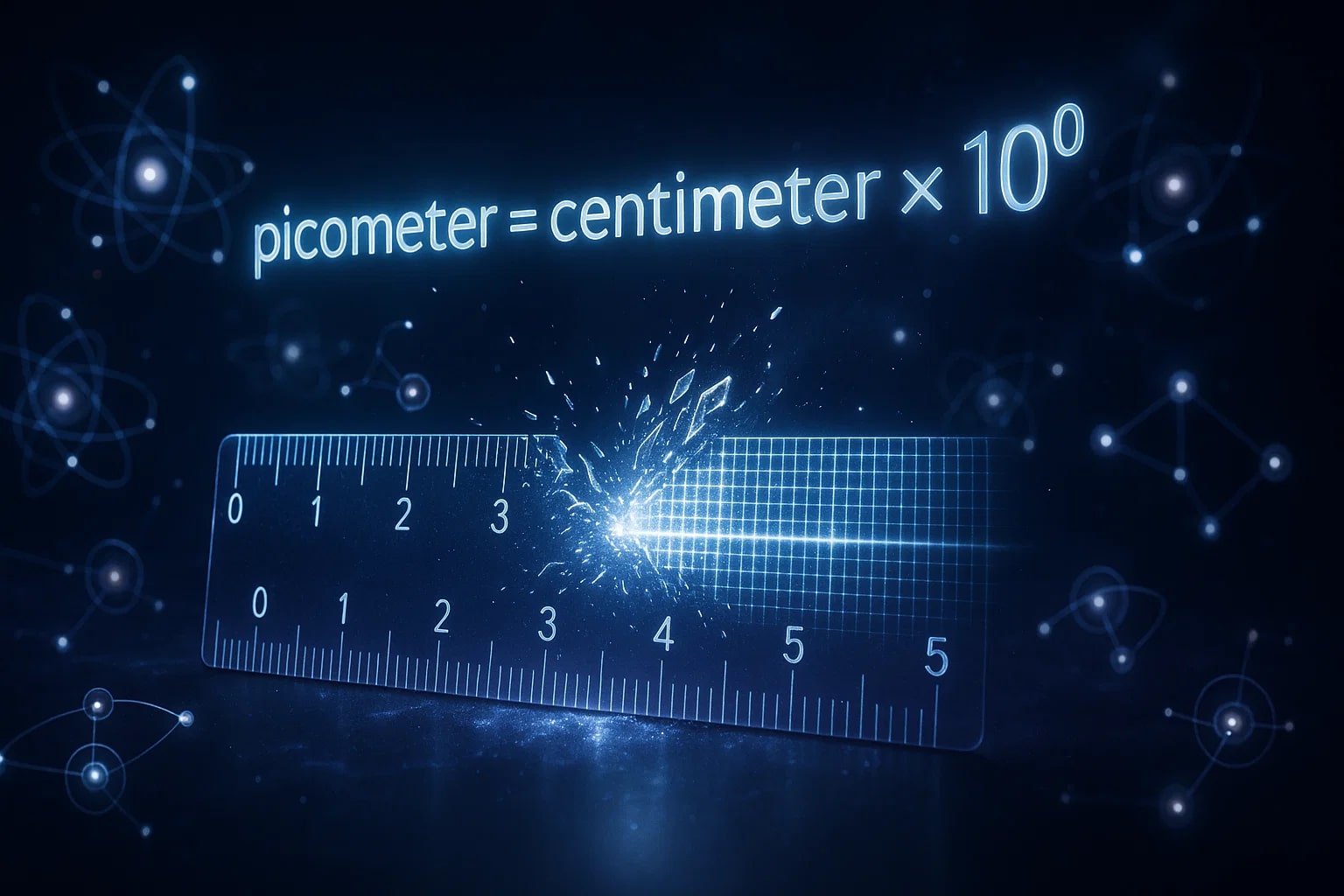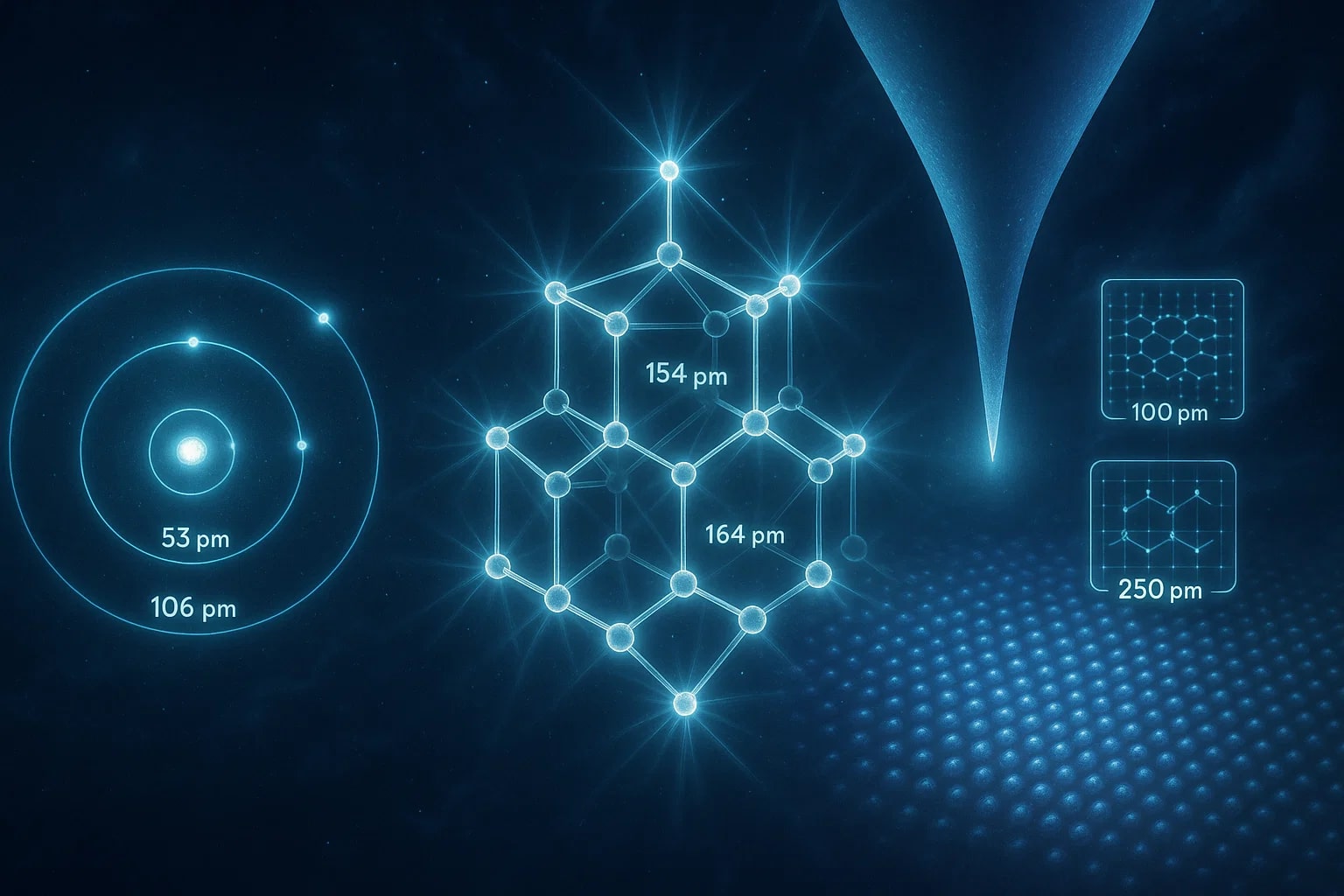centimeter to picometer – How to convert cm to pm
Converting from centimeter to picometer takes us from an everyday unit to one used in quantum physics and atomic science. The centimeter is practical for rulers, fabrics, and household items, while the picometer (pm) describes the size of atoms and bonds. Knowing how to convert cm to pm lets you move between the human scale and the atomic scale with one simple formula.

What is a Centimeter (cm)?
A centimeter equals one hundredth of a meter. It is common in daily life for measuring body height, notebooks, or furniture.
What is a Picometer (pm)?
A picometer is one trillionth of a meter:
1 pm = 10⁻¹² m.
This unit is used in physics, chemistry, and crystallography to describe atomic radii and bond lengths. For example, a hydrogen atom has a radius of about 25 pm.
How to Convert cm to pm
The formula is:
picometer = centimeter × 10¹⁰
For more related conversions, explore the Length Converter or check the full set of Conversion Tools.
Example Conversion
Suppose you want to convert 6 cm into picometers:
picometer = 6 × 10¹⁰ = 60 000 000 000 pm
So, 6 cm = 60 000 000 000 pm.
This shows how quickly values scale up when moving into atomic-level measurements.
Do you know?
-
The centimeter was standardized during the French Revolution in 1793 to unify measurements across society.
-
The picometer became widely used in the 20th century with the growth of crystallography and quantum mechanics.
-
Typical bond lengths between atoms are around 100–200 pm, essential for describing molecules in chemistry.
-
X-ray diffraction, a technique used to determine crystal structures, often records atomic positions in picometers.
Atoms, Bonds, and the Language of Picometers
In 1913, Niels Bohr introduced his atomic model, describing electrons orbiting the nucleus at specific distances. These distances were later expressed in picometers, offering scientists a universal way to quantify the invisible.
By the mid-20th century, chemistry textbooks adopted picometers to describe bond lengths. For example, the carbon–carbon bond in diamond measures about 154 pm. This precision allowed chemists to compare molecules, predict reactions, and design new compounds.
Today, physics and materials science still rely on picometers. Advanced microscopes like scanning tunneling microscopes can even measure surfaces with picometer accuracy. Whether studying graphene sheets or complex proteins, the pm remains central to describing atomic structures.

Bridging Everyday Life and Atomic Worlds
The conversion from centimeter to picometer may feel extreme, but it shows the flexibility of the metric system. Centimeters describe the visible; picometers capture the unseen. Together, they allow scientists and engineers to move seamlessly across scales that span from furniture to atoms.
By mastering this simple conversion, you gain perspective on how mathematics and measurement connect the world you can touch with the structures that shape it at the atomic level.

